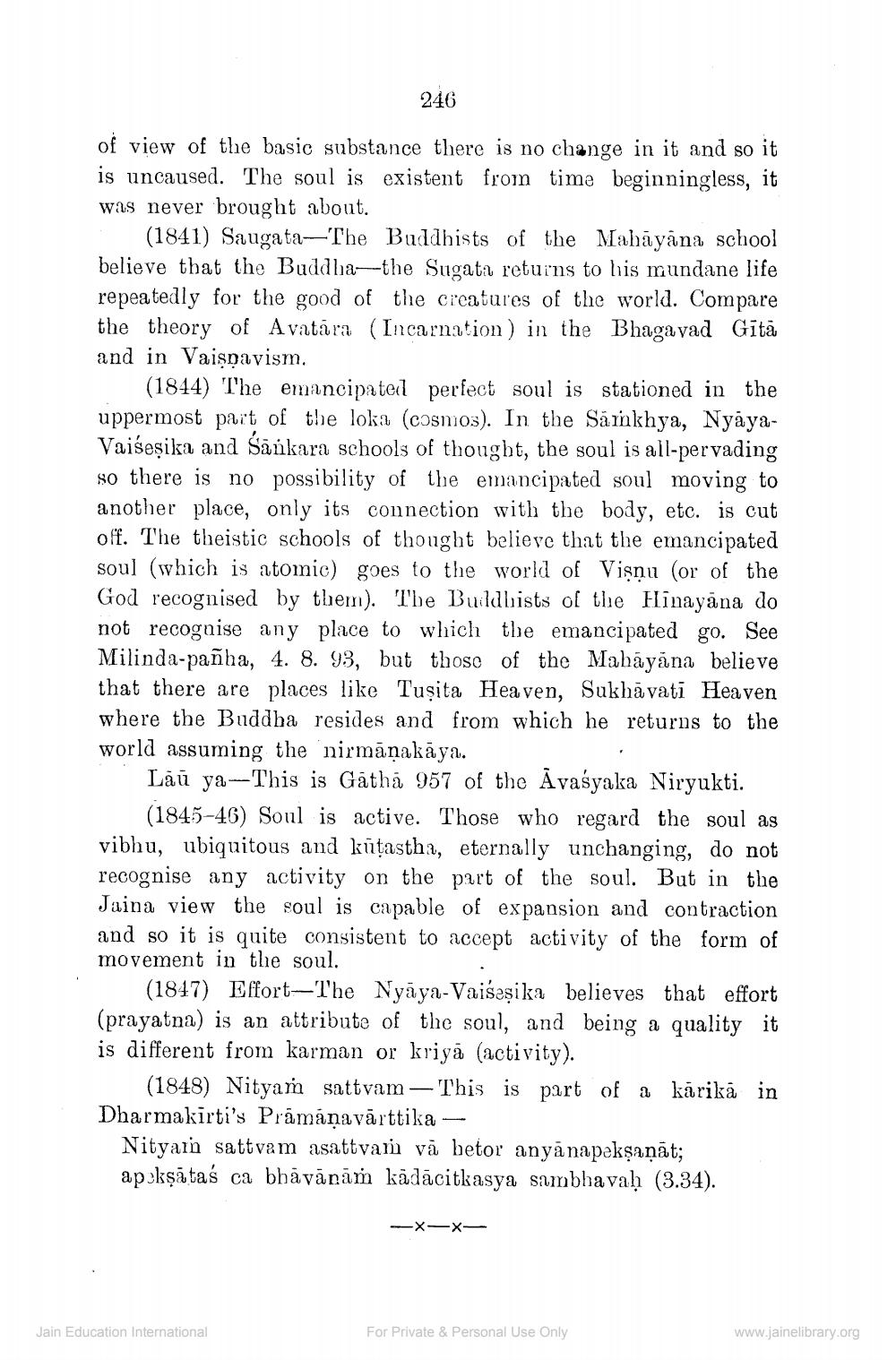________________
246
of view of the basic substance there is no change in it and so it is uncaused. The soul is existent from time beginningless, it was never brought about.
(1841) Saugata—The Buddhists of the Mahāyāna school believe that the Buddha--the Sugata returns to his mundane life repeatedly for the good of the creatures of the world. Compare the theory of Avatāra (Incarnation) in the Bhagavad Gītā and in Vaisnavism.
(1844) The emancipatel perfect soul is stationed in the uppermost part of the loka (cosmos). In the Sámkhya, NyayaVaiseșika and Sankara schools of thought, the soul is all-pervading so there is no possibility of the emancipated soul moving to another place, only its connection with the body, etc. is cut off. The theistic schools of thought believe that the emancipated soul (which is atomic) goes to the world of Vişnu (or of the God recognised by them). The Buildlists of the Hinayāna do not recognise any place to which the emancipated go. See Milinda-pañha, 4. 8. 93, but those of the Mahayana believe that there are places like Tuşita Heaven, Sukhāvatī Heaven where the Buddha resides and from which he returns to the world assuming the nirmānakaya.
Låū ya-This is Gātha 957 of the Avaśyaka Niryukti.
(1845-46) Soul is active. Those who regard the soul as vibhu, ubiquitous and kūtastha, eternally unchanging, do not recognise any activity on the part of the soul. But in the Jaina view the soul is capable of expansion and contraction and so it is quite consistent to accept activity of the form of movement in the soul.
(1847) Effort-The Nyāya-Vaišeșika believes that effort (prayatna) is an attribute of the soul, and being a quality it is different from karman or kriya (activity).
(1848) Nityam sattvam — This is part of a kärikā in Dharmakirti's Prämáņavārttika
Nityain sattvam asattvam vā betor anyā napekṣaṇāt; apeksātaś ca bhāvānām kādācitkasya sambhavaḥ (3.34).
--X—X—
Jain Education International
For Private & Personal Use Only
www.jainelibrary.org




